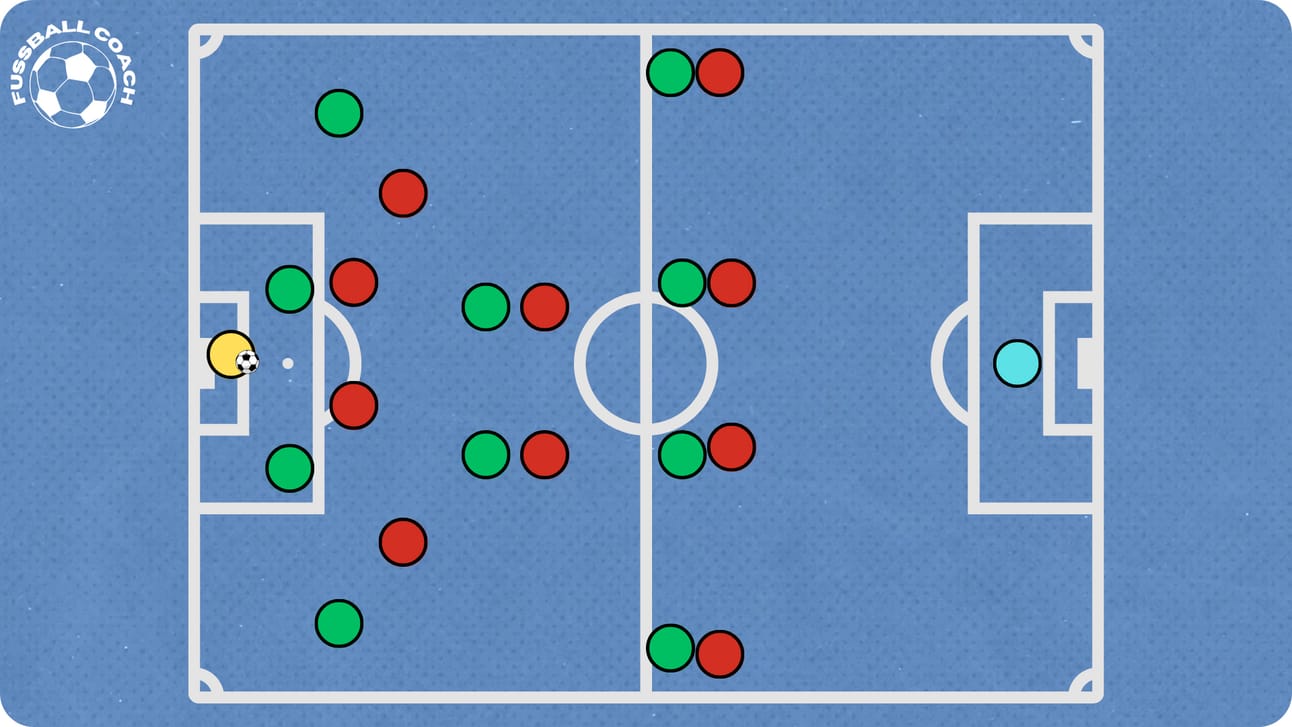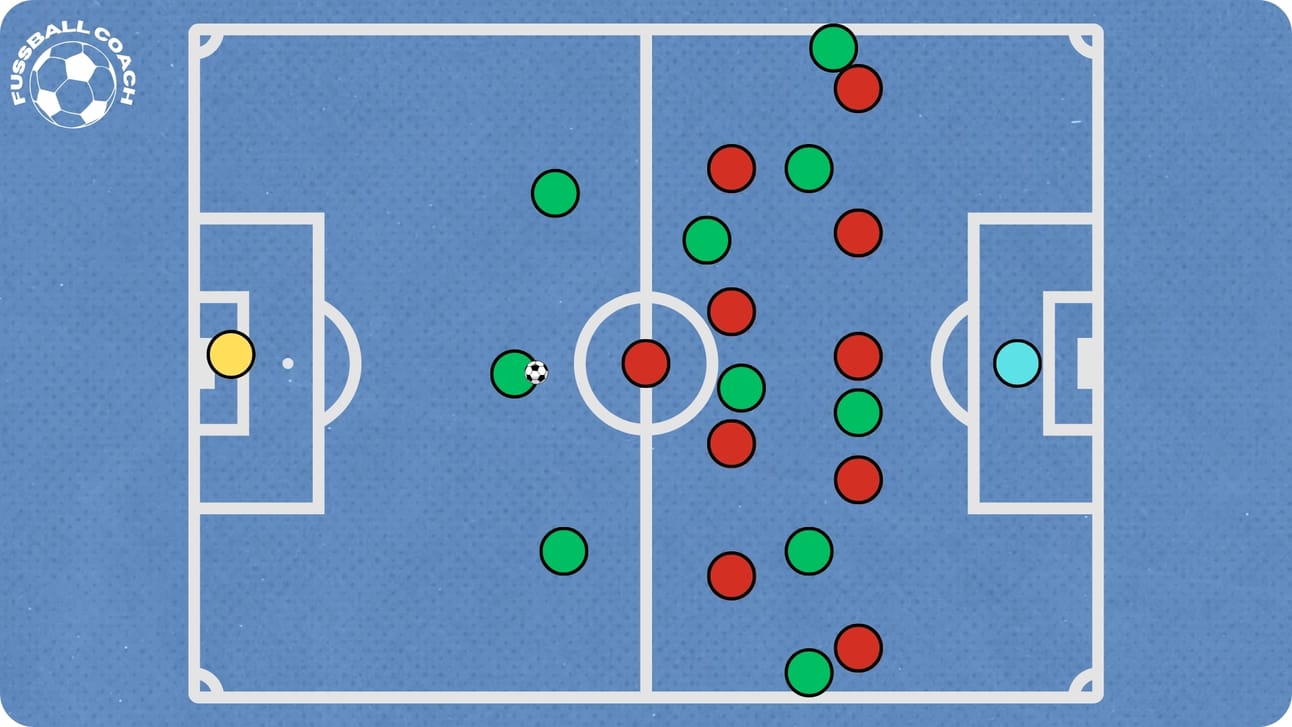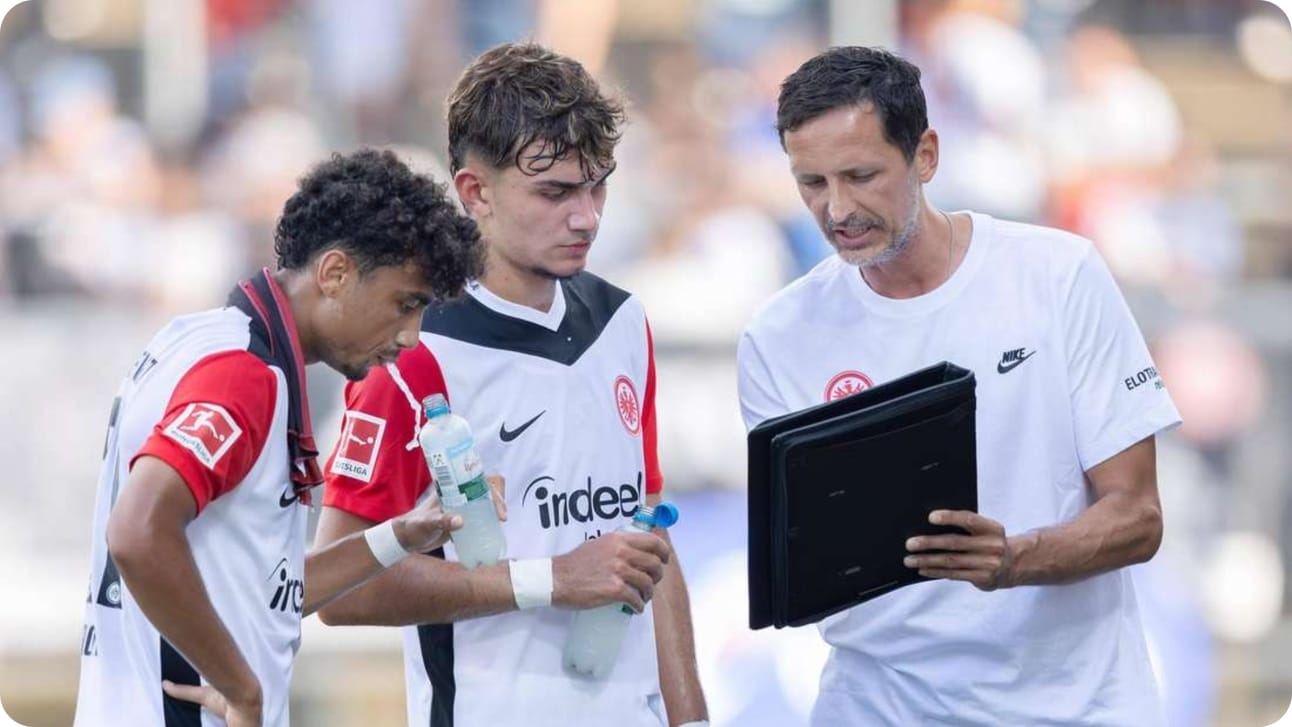- Fussball Coaches Newsletter
- Posts
- ⚽ Tactical Dissection with Dino
⚽ Tactical Dissection with Dino
How the Eintracht coach thinks about transitions, pressing, and build-up play
Hello and welcome back to the latest edition of our newsletter! In this issue, we’re focusing on the following topics:
⚽ Tactical Deep Dive with Dino Toppmöller (Eintracht Head Coach)
👉 4-Week Preseason Plan for Amateur & Semi-Pro Teams
⚽Taktik-Sezieren mit Dino
Dino Toppmöller is a coach who prefers to work under the radar, yet he knows exactly what he’s doing. In a recent interview, he offered a rare, in-depth look into his footballing philosophy. Instead of standard phrases like "we need to stay compact" or "we want to impose our game," he discussed concrete tactical mechanisms that explain why Eintracht Frankfurt is so hard to predict under his leadership.

Transition after winning the ball: Risk meets structure
Toppmöller makes one thing clear: A successful transition game is always built on a well-organized defense. Many coaches talk about "quick transitions," but without proper security, this plan falls apart. The balance between compactness and aggression is crucial.
What's interesting is how nuanced Toppmöller’s approach is. After winning the ball high up the pitch — for example, in the opponent’s half or just outside their box — the team should immediately attack with maximum risk and speed. Here, the element of surprise is key: The faster the attack is finished, the less time the opponent has to reorganize. This pattern is typical of teams that aim to actively stress their opponents — almost like a form of "controlled chaos."

When Frankfurt wins the ball deeper, the focus shifts depending on the exact location of the recovery. In central areas, the aim is to immediately penetrate the space behind the opponent’s defensive line. The center is crucial because it offers the shortest route to goal and often catches the opponent unprepared. If the opponent manages to retreat quickly after losing the ball, the option shifts to the flanks. By using the wide areas, Frankfurt can stretch the opponent’s defense and create new spaces in the center or at the far post.

This variability makes Frankfurt so hard to read. Transition play isn’t a rigid pattern, but rather a dynamic process that adapts to the ball recovery position and the opponent’s reaction.
Pressing: More than just chasing
Toppmöller differentiates pressing into two main approaches: high pressing and a deep block. In high pressing, intensity and emotion take center stage. The goal is to immediately pressure the opponent, force rushed passes, and provoke turnovers as quickly as possible. This aggressive pressing requires physically strong players who are also brave enough to take risks.
What’s particularly fascinating is Toppmöller’s emphasis on the emotional aspect. Players don’t just need to execute this type of pressing — they need to live it. Only then does that famous "pull" emerge, forcing the opponent backwards.

In a deep block, tactical intelligence is paramount. Instead of running at the opponent wildly, the focus is on carefully analyzing which spaces to offer. Usually, the opponent is allowed to keep the ball in the first line (center-backs or defensive midfielders) — the so-called "free foot." Meanwhile, the defensive line needs to be positioned in such a way that deep runs can be defended cleanly.
A crucial detail here is the defenders’ body positioning: They must always be ready to react to balls played in behind. Poor body shape often means that a single through ball can break the entire line.
Toppmöller is clear: A team that masters both aggressive pressing and disciplined deep defending has a huge advantage. It’s nearly impossible to press high for a full 90 minutes. That’s why the ability to switch between these two states is a hallmark of modern, high-quality teams.
Build-up play: Patience as a weapon
One of the most intriguing aspects of Frankfurt’s game is how they build up play. Statistics show that last season, Eintracht used central build-up more often than almost any other Bundesliga team. The reason: Early attacks down the flanks often lead to isolation. It’s easier for opponents to double up on the wing and close you down.
When building through the center, you first force the opponent to protect that area. This movement opens up the wide areas later — the so-called "opening the flanks through central play."
However, this approach is a double-edged sword: Losing the ball centrally gives the opponent a perfect setup for dangerous counters. Therefore, you need technically strong and brave players who are willing to repeatedly position themselves between the lines.
Toppmöller almost describes this approach philosophically: "We want to draw the opponent into the center, tie them up there, and then move wide." The goal isn’t to play the ball forward as quickly as possible, but rather to gradually gain control and wear the opponent down.

The perfect blend
All these elements — transition, pressing, build-up — are tightly interconnected under Toppmöller. A brave central build-up only works if the team can immediately counter-press after losing the ball. Aggressive pressing is only effective if the defense is well-organized behind it.
This is why Frankfurt under Toppmöller doesn’t follow a simple, single plan. Instead, it’s like a toolbox full of strategies, from which the team can draw the right tool depending on the game situation.
👉 4-Week Preseason Plan for Amateur & Semi-Pro Teams
Preseason is always a special time for us coaches: integrating new players, building fitness foundations, rehearsing patterns of play — all while already thinking ahead to those first matches.
To keep things structured yet flexible, I’ve put together a comprehensive 54-page, 4-week plan over the past few weeks.
Here’s what you’ll find inside:
✅ A complete 4-week plan with explanations, sample drills, and specific coaching points for each week
✅ Variations for 2 or 3 training sessions per week — depending on your team
✅ A detailed preparation checklist
✅ Weekly reflection questions to help you steer your team’s development more precisely
✅ Bonus: The top 5 core stability exercises that should be included in every preseason
o give you a first look, I’ve created a free light version you can download directly.
In this light version, you’ll find:
The complete first week (including plan, drills & coaching points)
One of the top 5 core exercises as an example
If you like the structure and content, you can get the full version anytime — with the complete 4-week program, all additional tools, and full detail.
👉 Download the free light version here:
|
And if you’d like to dive deeper:
👉 Here’s the full version (54 pages): 4-Week Pre-Season Preparation Plan | Fussball Coach
If you have any questions or feedback — feel free to reach out anytime.
Wishing you and your team a great preseason and lots of fun implementing the plan!
Check out our Homepage for exclusive training videos and products.
Was this post forwarded to you? Subscribe here.
Have an idea or feedback to share? [email protected]

Reply